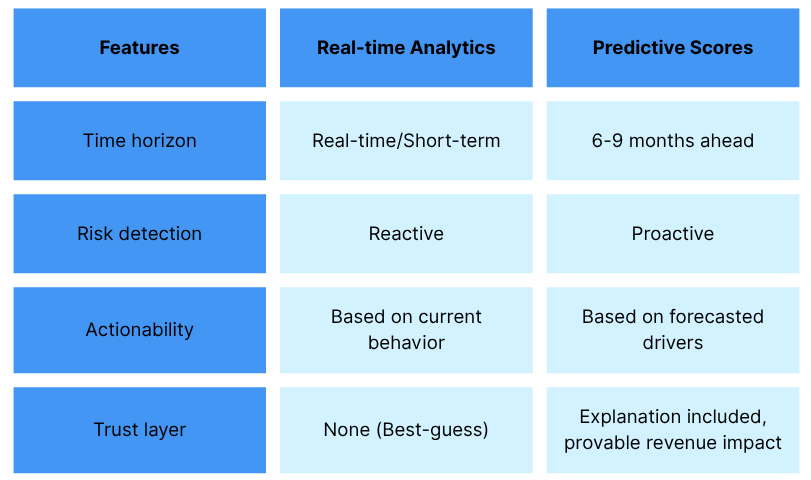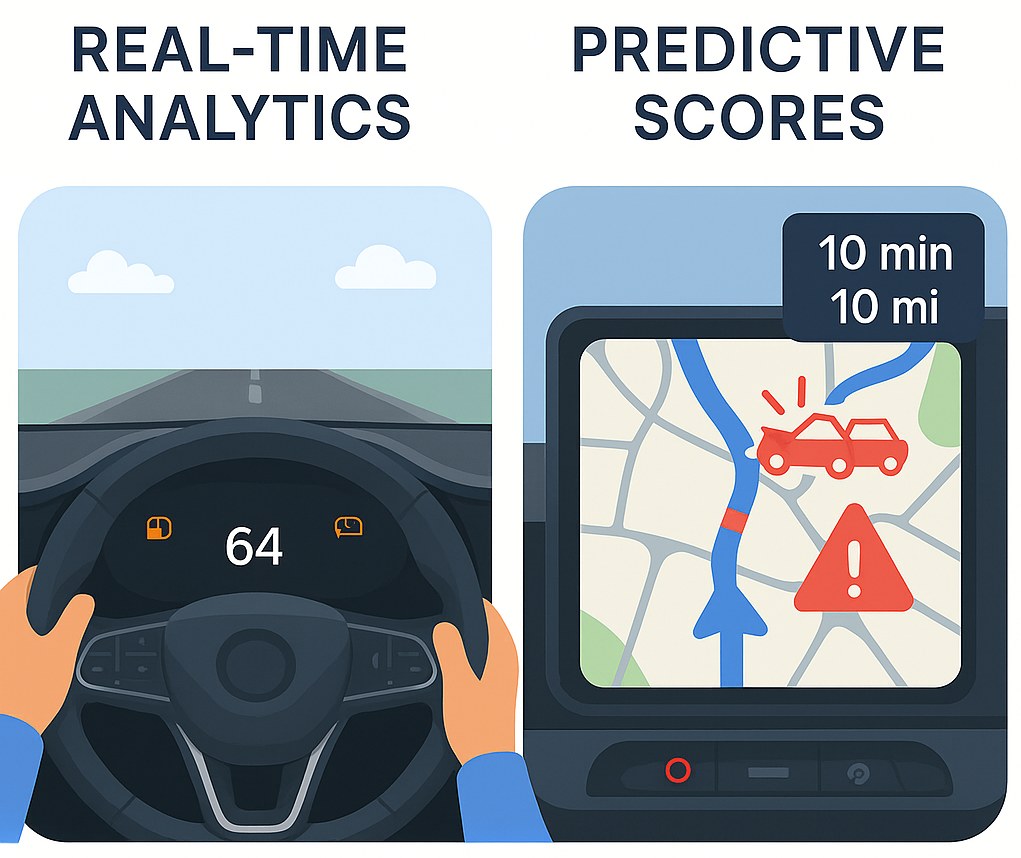Real-time Analytics vs. Predictive Scores: What SaaS Leaders Need to Know About Customer Risk
Companies today face mounting pressure to reduce churn and grow net revenue retention. While most teams rely on dashboards to track customer behavior, these tools only tell part of the story. What they don’t provide is foresight, an early signal that a customer relationship is veering off track.
That’s where predictive scores come in. Reef AI’s approach combines traditional real-time analytics with machine learning-powered forecasts to give teams a strategic edge. In this post, we’ll explain the differences, how they work together, and why the future of customer success depends on both
What Is Real-time Analytics?
Real-time analytics refers to current and retrospective insights into how customers are engaging with your product. Think:
- Usage trends
- Feature adoption
- Onboarding completion
- Support tickets
- Sentiment signals
These metrics help teams answer: What’s happening now? They’re essential for spotting immediate friction points and guiding day-to-day interventions.
But they’re reactive by nature.
What Are Predictive Scores (And Why Do They Matter)?
Predictive scores use historical data and machine learning to forecast the likelihood of churn well before symptoms show up in dashboards, typically 6 to 9 months in advance. Reef AI’s predictive scores don’t just offer a risk number. Each score comes with an explanation layer showing:
- Why a customer is at risk
- Which behaviors triggered the score (e.g., low decision-maker engagement, stalled onboarding, limited usage)
- When churn is likely to happen
This makes scores more actionable and trustworthy, giving teams the context they need to act early.
Key Differences Between the Two Approaches

Why You Need Both for Maximum Impact
Used together, these tools unlock a powerful advantage:
- Long-Term Signal + Short-Term Context: Predictive scores offer foresight. real-time analytics confirms real-time behavior.
- Proactive Intervention: With 6–9 months of warning, teams can re-engage exec sponsors, adjust onboarding, and realign on business goals.
- Precision at Scale: Explanation layers tie scores to behavior patterns (e.g., feature drop-off, stalled support cycles), guiding tailored playbooks.
Best Practice Example: A CSM reviews Reef AI’s monthly risk recommendations and flags 8 enterprise accounts as high-risk. They segment the list by driver, low executive visibility vs. feature underuse, then use real-time analytics to validate in-product trends and launch targeted success plans. Churn risk is reversed in over 50% of flagged accounts.
Real-world analogy
- Real-time analytics are like your car’s dashboard, they show what’s happening right now: speed, fuel, warning lights. Great for spotting current issues.
- Predictive scores are like your GPS with traffic alerts, they use past data, some of which come from your dashboard, to warn you of problems ahead, like a traffic jam 10 miles away, so you can reroute early.
Together, they help you drive safely and smartly, handling what’s urgent now while avoiding trouble later.

How Reef AI Unifies These Approaches
Reef AI brings predictive intelligence and real-time analytics together in one platform. Here’s what makes it different:
- Long-Term Risk Forecasting: Know who’s at risk and when
- Transparent Signal Attribution: Each score is backed by specific behavioral drivers
Unified Experience: No stitching together tools. Everything is delivered within existing systems.
Conclusion
Predictive scores don’t replace dashboards, they elevate them. By combining proactive risk forecasting with live behavioral monitoring, Reef AI empowers customer teams to move from reactive firefighting to strategic customer success.
Want to see how predictive scores can transform your retention strategy? Request a demo!




